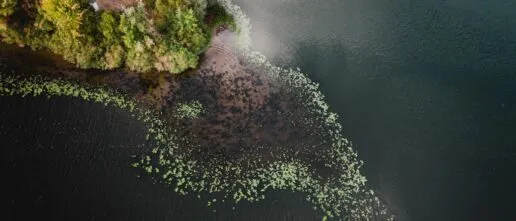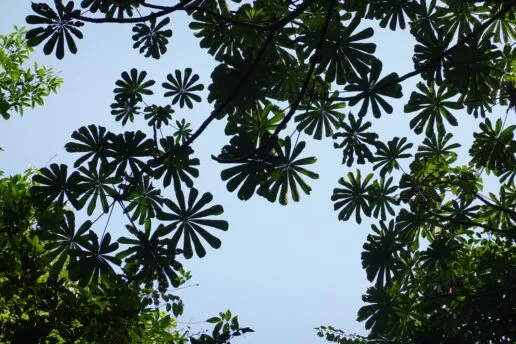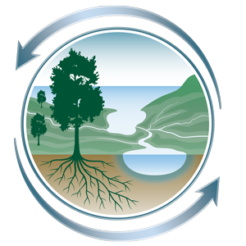A prerequisite for a successful nature recovery project is the ability to accurately predict forest recovery trajectories at the planning stage, and to precisely monitor progress during the execution stage. It has long been a dream to create a digital representation of a restored ecosystem. Vegetation models are tremendously useful tools in this regard because: (1) they can make predictions about the future, (2) they can upscale individual tree measurements to the scale of an entire study area, and (3) they can infer carbon fluxes that are difficult to measure directly.
Typically, dynamic global vegetation models progress through several scales:
(a) Leaf scale – Models often begin by calculating the rate of photosynthesis per leaf.
(b) Canopy scale – Photosynthesis per leaf area is upscaled to the whole canopy to derive gross primary productivity (GPP) of a forest.
(c) Vegetation cohort scale – GPP is partitioned into autotrophic respiration and net primary productivity, and then further allocated into different components (stems, roots, etc.) of vegetation.
(d) Ecosystem scale – At this scale, carbon flows from vegetation into necromass and soil. Many models also account for multiple plant functional types, land-use types, and disturbances such as fire.
Thus, a vegetation model incorporates many processes, all of which must be supported by ecological theory and field measurements. In this project, we aim to bridge field measurements and vegetation models across multiple scales, with the goal of improving our understanding of ecological processes and their numerical representation (i.e. vegetation models). Our work focuses on the following areas:
(1) Plant functional traits and theories related to photosynthetic traits
(2) Carbon flux measurements and simulations, including productivity, carbon allocation, and respiration
(3) Land-use change–induced carbon cycle dynamics
(4) Climate change–induced carbon cycle dynamics
(5) Carbon cycle dynamics following disturbances (e.g., drought, fire, logging)
Related Research Themes

Scale and Technology
Tracking and evaluating nature recovery at both fine resolution and large spatial scales utilising state-of-the-art remote sensing, big data, and deep machine learning techniques.

Ecology
Testing the effectiveness of different ecological approaches for nature recovery to support biodiversity and the delivery of ecosystem services such as climate change mitigation and adaptation.
Related Outputs
Why models underestimate West African tropical forest productivity
Tropical forests dominate terrestrial photosynthesis, yet there are major contradictions in our understanding due to a lack of field studies, especially outside the tropical Americas. A recent field study indicated that West African forests have among the highest forests gross primary productivity (GPP) yet observed, contradicting models that rank them lower than Amazonian forests. Here, […]
Contrasting carbon cycle along tropical forest aridity gradients in West Africa and Amazonia.
Tropical forests cover large areas of equatorial Africa and play a substantial role in the global carbon cycle. However, there has been a lack of biometric measurements to understand the forests’ gross and net primary productivity (GPP, NPP) and their allocation. Here we present a detailed field assessment of the carbon budget of multiple forest […]




